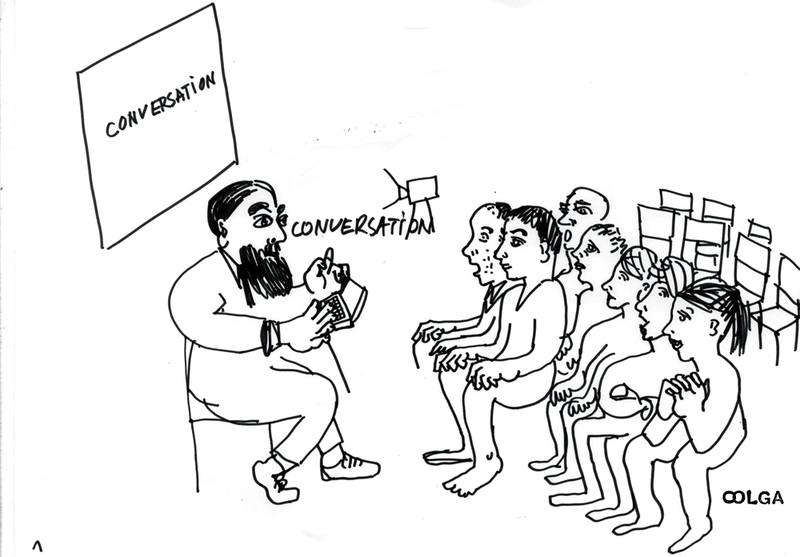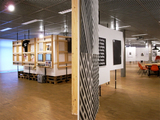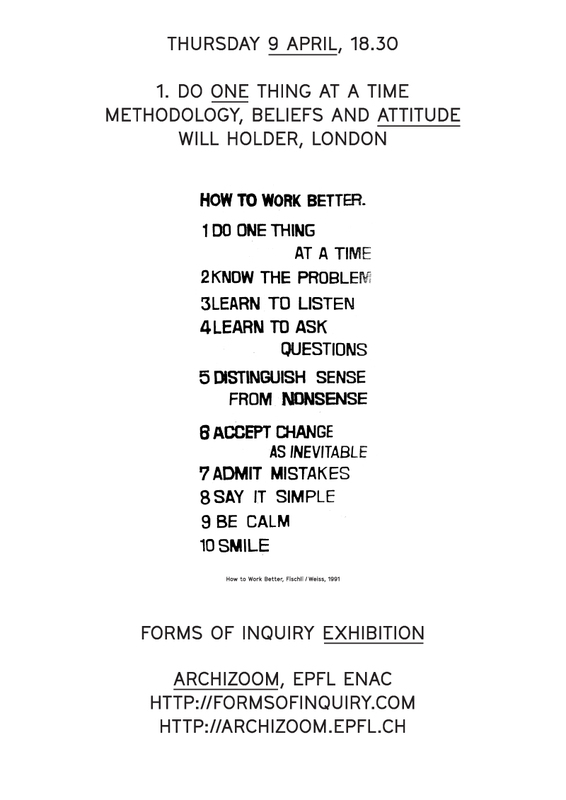Archizoom EPFL
27 Feb – 09 Apr 2009 Lausanne (CH)-
1. Do One Thing at a Time
Thu 09 Apr 18.30 Will HolderDesign practice is governed by a series of rules and principles. They include the use of tools (“1. Before phoning, make clear notes of what facts you are going to transmit, especially figures” –Ken Garland), visual codes (“1:2, 2:3, 3:5” –Fibonacci) and production processes (“Essential for every binding–and certainly for all books with a spine width of 3mm or greater–is a spine title” –Jost Hochuli), and can extend to the relationship with clients (”18. Clients don’t have their company logo in a usable print-ready format, so don’t bother asking" –www.graphicdesignforum.com) or to the application of moral (“3. The service rendered to the world by printers is best talked about by those who are served. The printer had better confine his attention to the well doing of what he wants to do or is asked to do, namely to print. When the servant brags about his services it is probable that he is stealing the spoons” –Eric Gill) or ethical principles (“22. Would you design a prison? If not, why not?” –Norman Potter). Each element is a choice that can define and position a designer’s practice.
The application of a methodology is also a statement in itself (“16. Have read ‘How to work better’ by Fischli & Weiss at least once” –Norm).
How do today’s models exist in relation to past models? How do we learn from transverse practices? When do these model become normative? What are the alternatives to these models and what are the scales of their resistance?
-
-
-
-

- Drawing by Olga Prader
-
-

